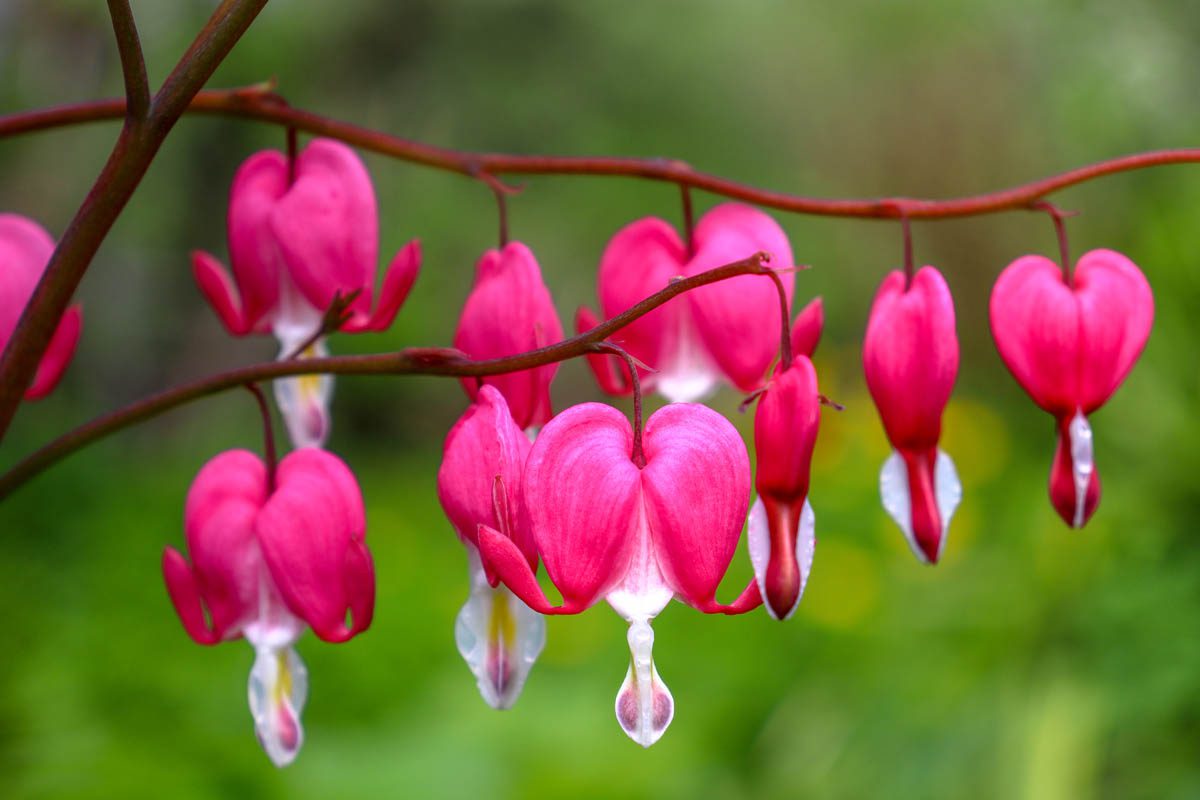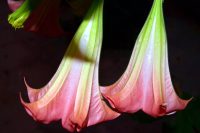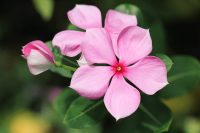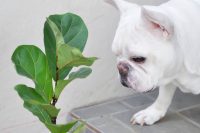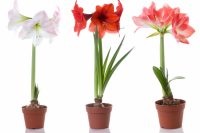Bleeding heart (Dicentra spp., andLamprocapnos spectabilis) is toxic to dogs. The toxic principle is isoquinoline alkaloids, a convulsant and irritant sap that can cause skin irritation and ocular pain. Alkaloids are secondary metabolites that are organic compounds produced by the plant that are not directly involved with growth, development or reproduction. Secondary metabolites have several functions including cooperating with other species, such as flowers that attract insects necessary for pollination or to repel pests including plant-feeding insects and animals and pathogenic microorganisms.
| Family | Papaveraceae (poppy) |
| Botanical name | Dicentra spp., and Lamprocapnos spectabilis |
| Common names | Turkey corn, Wild bleeding heart, Fringed bleeding heart, Bleeding-heart, Wild bleeding heart, Dutchman’s breeches, White eardrops, Steer’s head, Soldier’s cap, Butterfly banner, Kitten breeches |
| Plant type | Perennial herb |
| Flower colour | Pink, pink and white, red, white |
| Native to | Eastern Asia and North America |
| Toxic property | Isoquinoline alkaloids, irritant sap |
| Toxic parts | All parts |
| Severity | Moderate |
Bleeding heart is a genus of nine species of perennial herbs native to Siberia, northern China, Korea, Japan, and the temperate woodlands of North America. It is a popular garden flower and is also cultivated as a cut flower.
- D. eximia (Fringed bleeding heart, Turkey-corn, Wild bleedingheart, Eastern bleeding heart, Staggarweed, Plumy bleeding heart )
- D. formosa (Western, Pacific bleeding-heart)
- D. cucullaria (Dutchman’s breeches, Snowboys, Soldier cap, White hearts, Eardrops, Monks head, Butterfly banners, Kitten breeches, Bachelor’s breeches, Little boys breeches, Staggerweed)
- D. canadensis (Squirrel-corn)
- D. uniflora (Longhorn steershead, Steer’s head)
- D. nevadensis (Siberian bleeding heart)
- D. pauciflora (Short-horn steer’s-head)
- D. peregrina (Komakusa)
- Lamprocapnos spectabilis formerly Dicentra spectabilis (Fallopian buds, Asian bleeding heart, Bleeding heart, Lyre flower, Lady-in-a-bath)
Note: Dicentra spectabilis was reclassified as Lamprocapnos spectabilis based on DNA sequencing and differences in anatomy.
Clinical signs
Symptoms of toxicity relate to how much of the plant has been consumed, thankfully, the unpleasant taste is enough to deter most dogs from consuming much. Livestock is at the greatest risk as they are more likely to consume a large amount of the plant. Ingestion of bleeding heart can impact multiple body systems including the gastrointestinal tract, liver, skin and nervous system. Small dogs and puppies are at increased risk.
Gastrointestinal
- Vomiting
- Diarrhea
- Salivation
- Loss of appetite
Dermal
- Skin irritation
- Redness
- Swelling
- Itchiness
Liver
- Convulsions
- Seizures
Nervous system
- Tremors
- Difficulty walking
Treatment
There is no antidote to bleeding heart toxicity, and treatment is aimed at preventing further absorption and managing clinical signs.
If ingestion was recent, the veterinarian will induce vomiting or flush the stomach (gastric lavage), followed by administration of activated charcoal which binds to any remaining plant matter preventing further absorption. Dogs in respiratory distress will be placed on oxygen. If the dog is experiencing seizures, medications will be administered to control them. Fluid therapy will be given to treat or prevent dehydration and electrolyte derangements as well as help to flush any remaining toxins from the body.
Prognosis
The prognosis is excellent for dogs who have only consumed a small amount of plant matter and received treatment before organ damage occurred.
Julia is a writer and landscape consultant from Wollongong with a love of horticulture. She had been an avid gardener for over 30 years, collects rare variegated plants and is a home orchardist. Julia is passionate about learning and sharing her knowledge of plant propagation and plant toxicology. Whether it’s giving advice on landscape projects or sharing tips on growing, Julia enjoys helping people make their gardens flourish.
